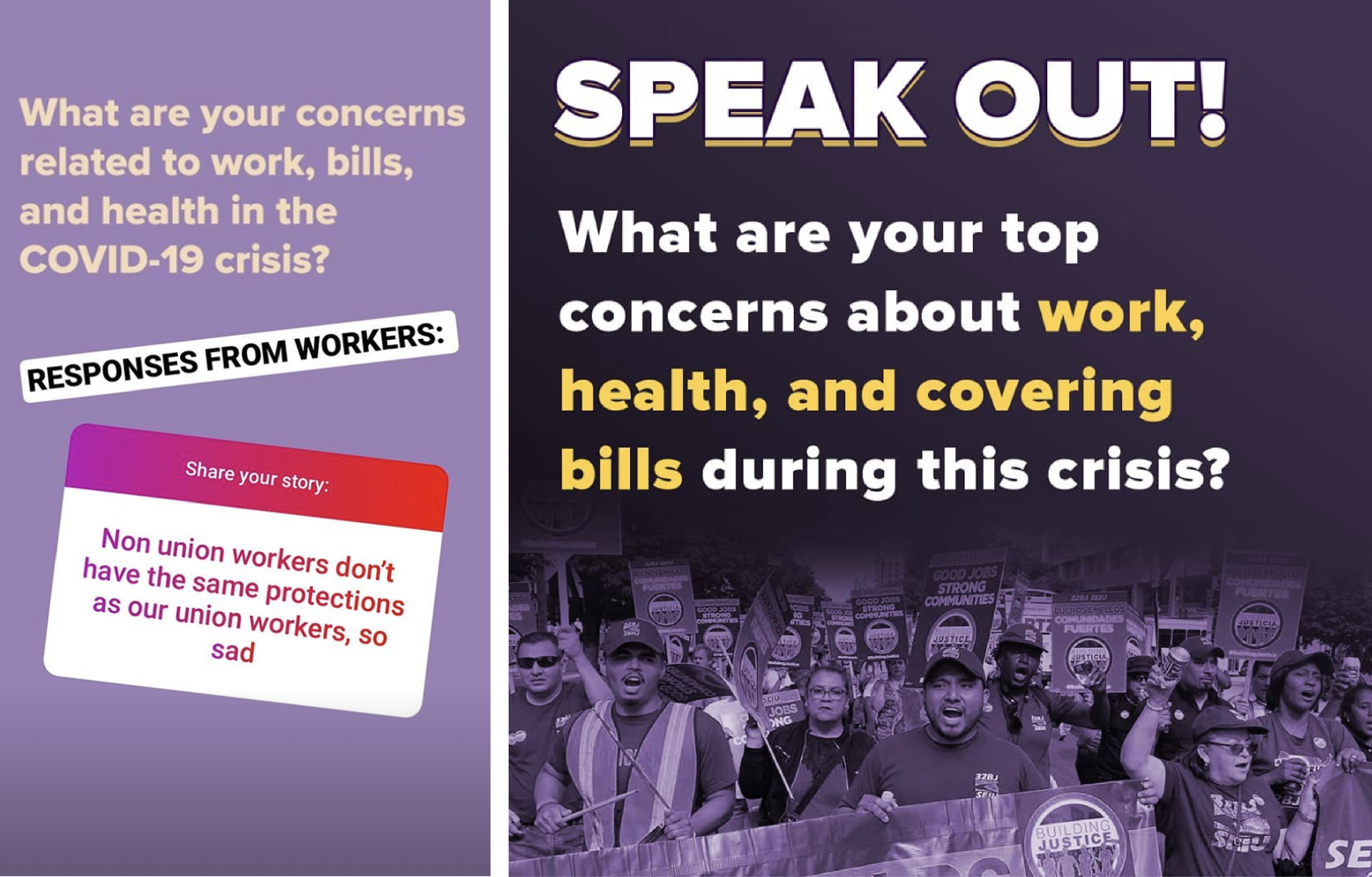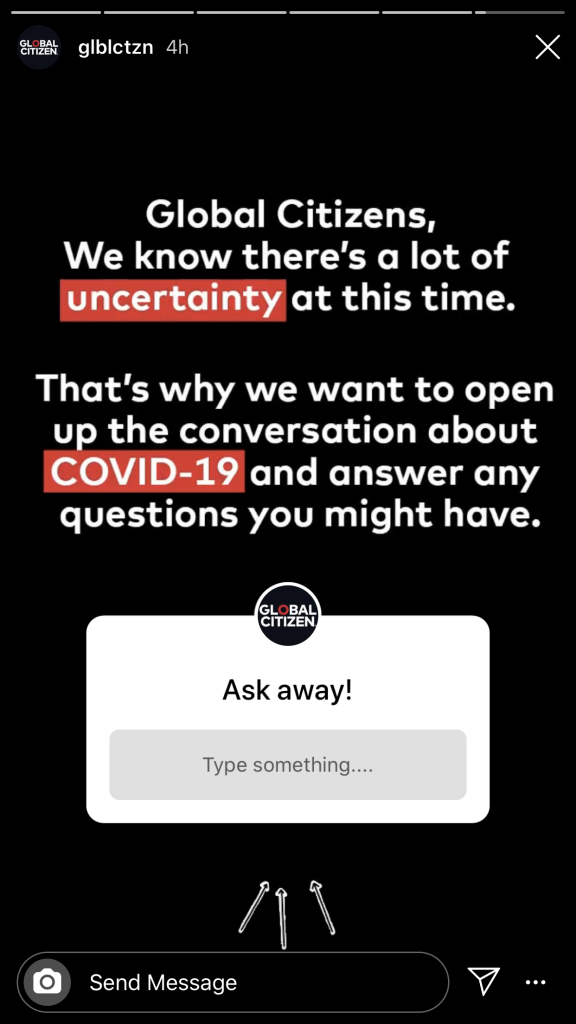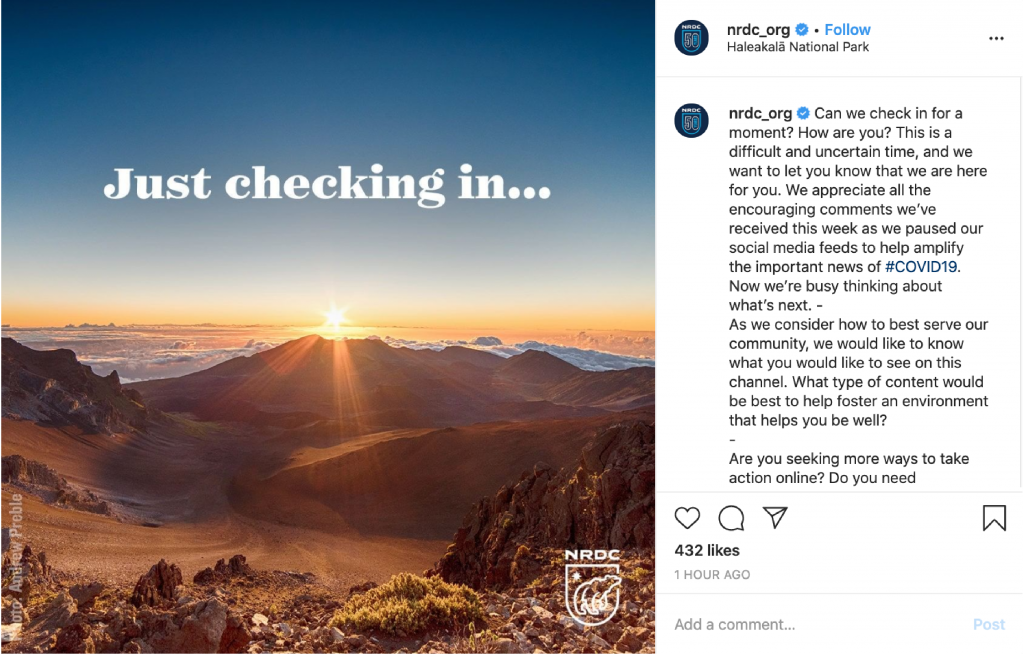Read time: 5 minutes
We never wanted “captive audience” to have the meaning it has right now. But the truth is many people are stuck at home, isolated from their friends and neighbors (maybe even locked in the bathroom trying to get 20 minutes out of sight from their 3-year-old to write a blog post, erm), and they’re spending untold hours watching Instagram Live and aimlessly clicking links on the internet.
In this moment, we’re all eager hungry desperate for connection. Your supporters want to connect to others—family, friends, YOU. No matter what your mission, now is an important moment for you to listen. Ask your supporters for their stories right now, while they have time and inclination to share, and WHEN we return to something that can plausibly be described as “normal,” these stories can be used in dozens of ways to support your fundraising, marketing, or advocacy goals.
Here’s how to start (or grow) your story collection:
Find stories that folks are already telling. Look for user-generated content (UGC, content that individual people post to social media with little or no prompting from you) that strikes one or more of the right chords to feel on key with your brand. To get hunting for UGC, it helps if you’re already set up to monitor and engage your community around keywords and hashtags. If you’re not, you’ll need to spend time getting caught up on how people are talking about your issues in their own words, and then chasing those ideas around social channels until you’ve caught the tail of a promising story or two. Here are five things worth chasing:
- Look at hashtags that might not be 💯on-brand for your organization, but that everyday people love to use, like #savetheboobies for cancer groups.
- Let the social channels be your guide since most of them will suggest “hashtags to follow” and top-performing hashtags.
- Spend some time looking at what hashtags are being used by top voices on your issues: outspoken activists, community leaders, workers, academics, and authors.
- Scroll through your peers’ posts and check out the hashtags they’re using.
- Use tools like Hashtagify to lead you to other hashtags that relate to your work.
Ask for stories. Of course, capturing stories from an existing audience can be more efficient than endlessly scrolling social media hoping for a hit. “Ask and you shall receive” is an age-old social media adage, and it’s equally true for story collection.
Here are 3 ways to ask:
- Create a hashtag challenge: Give your supporters a directive, hashtag it, and you’re on. Cross-promote your hashtag campaign across all communications channels—don’t limit yourself to social media here. Activate your audience with a direct call to action like, “Share your story and photo in the comments below.”
- Use on-platform tools to solicit stories including polls, Q&As, Instagram Stories “Ask a Question” sticker, Twitter threads, and more. Social channels FTW.
- Turn back the clock: Look at who engaged with your hashtags in the past, and comment or direct message those folks to ask them what’s going on with them today. We love Keyhole as a dependable map to these treasures. There are other rabbit holes worth going down here too, depending on how urgently you need stories. One is to climb down your follower trees a bit, looking especially at any smaller affiliated follower lists from your local or state groups to see who is on them, and consider whether they might have a story to tell.
Here are some examples of “the ask” that we love:



Keep your ask simple. It’s hard to get everyday people to deliver your talking points perfectly, so keep that in mind when you’re making your ask. For this reason, story collection works especially well on Twitter, where people are forced to keep things short(ish). But on any channel you can impose simplicity by using hashtag fill-in-the-blanks, like #TransAndEmployed, #LastChemo, #HomeIsHere, and #MyPandemicSurvivalPlan.
It also helps to ask SPECIFIC questions (How are you getting outside right now?) versus BROAD (What are you doing these days?).
Ask again. Everything is changing daily for people right now. Our stories are going to deepen and unfold in the coming days and weeks. Don’t be afraid to ask your supporters for their stories more than once, in different ways: Use this hashtag. Respond in comments. Post your selfie. Send us a tweet. Comment with your photo. Film a 20-second video answering this question. Hold up this sign. And on.
Ask regularly. We’re all trying to adapt to new routines in this new reality. Consider making story collection part of that routine. Pick a day of the week to activate your audience to establish a rhythm and set an expectation with your audience.
Turn one great story into more. Get your staff, board members, organizers, or others to post their story and tag your organization or use your hashtag. If you can launch this with an influencer, even better—consider using paid tools for pay-per-post options, or using in-channel paid options like TikTok’s hashtag challenge. Or just get the ball rolling with your own inner circle. Once you have one or more stories in hand, repost that content prominently to your social channels through Instagram Stories, Twitter threads, feed posts, pinned tweets, and more to set off a chain of responses. Tag the heck out of those posts, including tagging journalists who cover your issues.
A quick note about permission: Some groups like to ask for permission to re-use supporter stories (in the comments or through direct message). That can be great for establishing a one-to-one connection with a storyteller, particularly if they have a powerful story you can see using again and again across channels. But permissions can also slow your process way down and it takes capacity to set up and manage a tracking system. So for some stories, you can just roll with social media conventions and post with credit (@mention the storyteller). This is especially true of people who engage with your hashtag directly.
Story collection can sometimes take time, but it works. Success might just be ONE amazing story that you can use across ads, fundraising, with policymakers, and in your emails for many months ahead.
Like this one:

When Marjory isn’t busy designing and winning campaigns, she moonlights as a sign painter and heads up M+R’s Los Angeles office. You can reach her at mgarrison@mrss.com.
